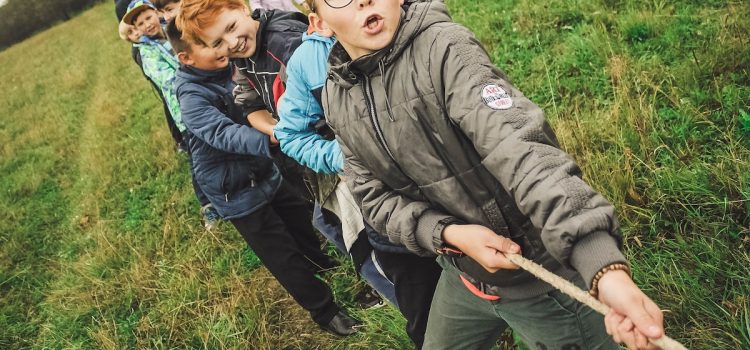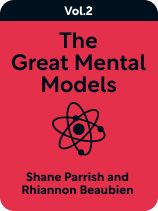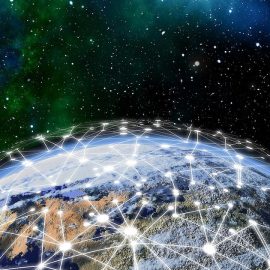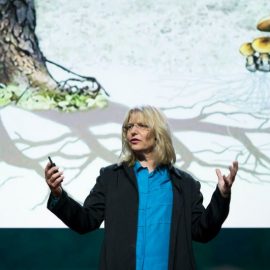

This article is an excerpt from the Shortform book guide to "The Great Mental Models Volume 2" by Shane Parrish and Rhiannon Beaubien. Shortform has the world's best summaries and analyses of books you should be reading.
Like this article? Sign up for a free trial here.
What strengths do you have that you could be combined with the strengths of others to accomplish something great? How might you help yourself by helping others?
Everything we do affects—and is affected—by other people. If you join forces with others, you’ll be capable of much greater things than you could achieve on your own. Two scientific models, alloying and cooperation, show you how to do just that.
Keep reading to see how science shows us that we are stronger together.
We Are Stronger Together
None of us acts alone. One of Rhiannon Beaubien and Shane Parrish’s recurring ideas in The Great Mental Models Volume 2 is that the world consists of systems that depend on the interaction of all their components. For example, they say that human social systems are like biological ecosystems—they consist of a delicate balance between all their members. Similarly, they use the model of reciprocity—based on Isaac Newton’s third law of physics, that every action has an equal and opposite reaction—to point out how everything we do produces a response from those around us. We’ll look at models that help us navigate these dynamics of reciprocity by collaborating with others, demonstrating that we are stronger together.
(Shortform note: Systems are a recurring theme in the Great Mental Models series. For example, The Great Mental Models Volume 1 includes several models designed to introduce the idea of interconnectedness. Meanwhile, The Great Mental Models Volume 3 draws around half of its models from systems science in order to explain individual behavior and social dynamics.)
Alloying
One reason to work collaboratively with others is that combining forces enhances our capabilities. Beaubien and Parrish explain this concept through the model of alloying. In chemistry, an alloy is a combination of a metal and at least one other substance. Alloys enhance the base metal by adding new properties that make the alloyed metal more useful. For example, on its own, tin is so soft that it can be bent and shaped by hand. But if you add small amounts of antimony, copper, silver, or lead to tin, you create pewter, an alloy that’s still soft enough to be sculpted, but hard enough to hold its shape when made into practical objects like tableware.
Beaubien and Parrish argue that, in a human context, alloying describes the way people can combine their strengths to accomplish things that neither person could accomplish alone. For example, when Steve Jobs and Steve Wozniak formed Apple, they created an alloy that combined Jobs’s business and marketing instincts with Wozniak’s engineering skills to create a company and products that neither person could have created alone.
(Shortform note: Unlike physical alloys, human alloys can break apart. For instance, with the launch of the Macintosh computer—Apple’s follow-up to the successful Apple II—Jobs distanced himself from the Apple II team and Wozniak, a move that contributed to Wozniak’s decision to leave the company.)
Beaubien and Parrish point out that another benefit of working with others is that, in addition to complementing your skills, other people can supplement your knowledge and strengthen your understanding of the world. They argue that this is important in part because knowledge itself is an alloy of elements such as theoretical understanding, practical know-how, and wisdom. Often, these elements are only useful when they combine with each other. For example, it’s one thing to intellectually understand how a clutch pedal and gear stick work together to select the appropriate gear while driving—but without practice, this theoretical knowledge won’t prevent you from stalling a manual transmission car.
(Shortform note: The idea that knowledge can be strengthened by learning from others lines up with other explanations of knowledge in the Great Mental Models series. For example, in Volume 1, the authors recommend that you recognize your strengths and weaknesses and seek help from experts when you’re outside your own circle of mastery. Likewise, in Volume 3, the authors argue that knowledge compounds over time such that each bit of learning eventually adds up to exponentially greater capabilities as your knowledge and skills alloy with one another.)
Cooperation
Whereas alloying shows the power of uniting toward a common goal, the model of cooperation shows how two parties can utilize reciprocity by aligning their actions to benefit each other—even as they pursue individual interests. Beaubien and Parrish illustrate this principle with the biological phenomenon of symbiosis, which shows how cooperation lets individuals align their purposes for mutual gain.
In biology, symbiosis refers to a mutually beneficial relationship between two different species that live in close proximity. For example, clownfish spend much of their lives among the venomous tentacles of the sea anemone. The clownfish are covered in mucus that protects them from the anemone’s sting, meaning that the anemone provides them a safe home. In return, the brightly-colored clownfish attract other species that the anemone then kills and eats—leaving behind scraps that feed the clownfish.
(Shortform note: When Beaubien and Parrish describe symbiosis as a form of cooperation, they’re referring to a specific type of symbiosis called mutualism, in which both species benefit from each other’s actions. There are three other types of symbiosis, none of which has the same cooperative dynamic. The other types are commensalism (when one species benefits and the other experiences neither benefit nor harm), parasitism (when one species benefits at the other’s expense), and competition (when species directly compete for resources).)
Beaubien and Parrish point out that similar forms of cooperation exist within the human world, often in the realm of business. For example, Etsy is a platform for creators, artisans, and small retailers to sell specialty goods. The platform is based on the idea of mutual benefit—Etsy provides the infrastructure and exposure that small sellers would struggle to get on their own, and in return, Etsy makes a profit by charging listing fees, transaction fees, and payment processing fees. This sort of business model demonstrates the power of Beaubien and Parrish’s suggestion to think about what you can offer others, not just what they can offer you—often, by helping others, you help yourself as well.
(Shortform note: The principle that helping others helps you isn’t just useful in a business context—it also underpins many religious and spiritual practices. For example, in 10% Happier, retired journalist Dan Harris shares the insight—gleaned from his interview with the Dalai Lama—that practicing compassion for others benefits you, as well. Specifically, compassion makes you calmer and happier, and it helps you befriend others—which in turn increases your opportunities for the more material forms of cooperation Beaubien and Parrish describe above.)

———End of Preview———
Like what you just read? Read the rest of the world's best book summary and analysis of Shane Parrish and Rhiannon Beaubien's "The Great Mental Models Volume 2" at Shortform.
Here's what you'll find in our full The Great Mental Models Volume 2 summary:
- How you can understand anything by learning a finite set of rules and patterns
- How physics can help you improve interpersonal interactions
- Why making a major life change is so difficult






